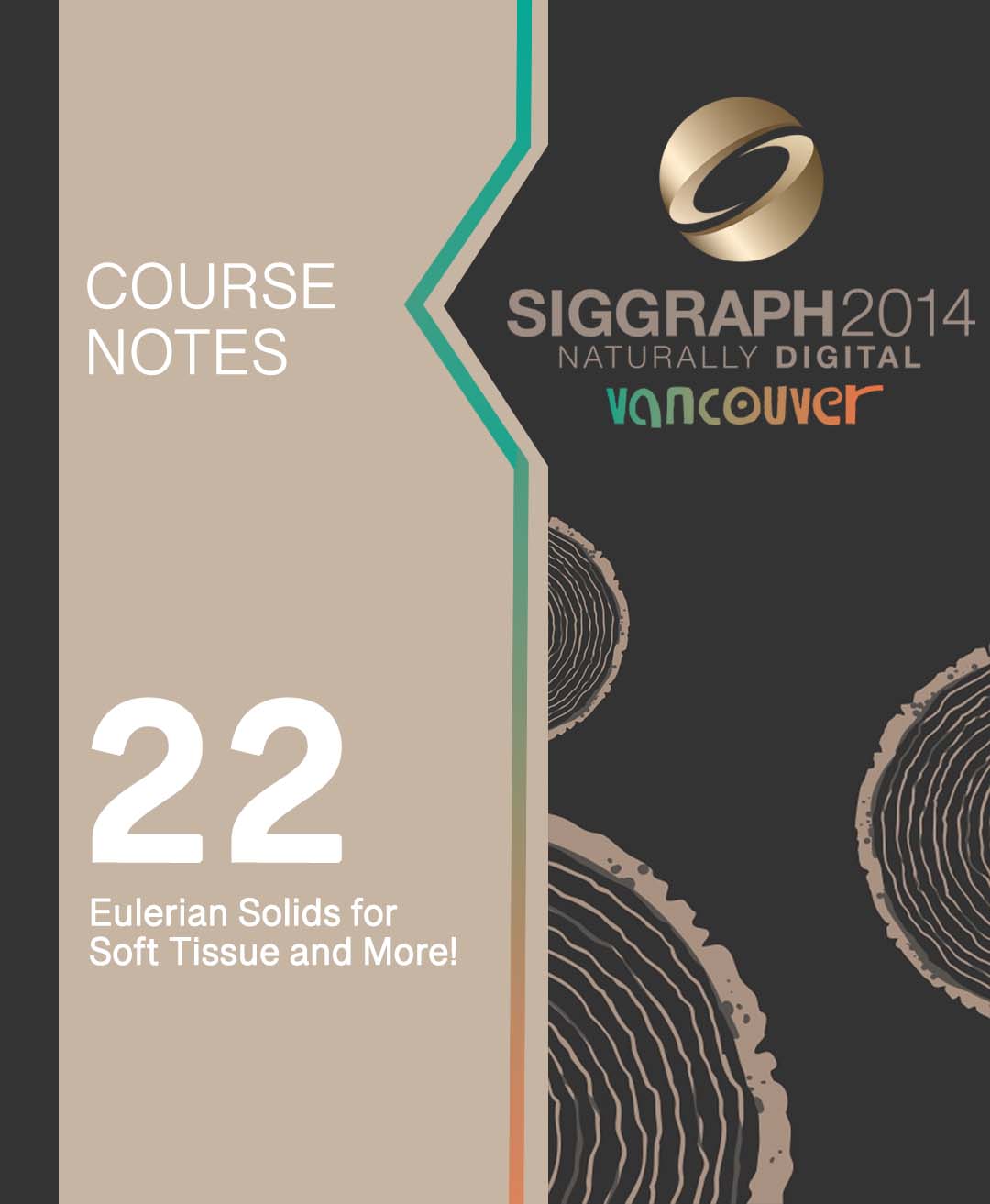“Eulerian Solids for Soft Tissue and More!” by Pai, Levin and Fan
Conference:
Type(s):
Entry Number: 22
Title:
- Eulerian Solids for Soft Tissue and More!
Course Organizer(s):
Presenter(s)/Author(s):
Abstract:
Description
This course focuses on the use of Eulerian solids to simulate muscles, tendons and other highly constrained mechanical and biomechanical systems. We aim to give the reader both a theoretical and practical introduction to the Eulerian solids methodology by focusing on relevant applications in physically based animation. Eulerian methods have many advantages over standard techniques: First, they can simulate highly deformable objects without resorting to complicated remeshing operations. Furthermore they can handle sliding and conforming contact efficiently as well as trivially simulate volumetric data. This makes them useful for simulating a wide class of elastic solids undergoing bilateral or unilateral constraints and particularly well-suited for muscles, tendons and other tissues. As such, the addition of Eulerian solids to the graphics practitioner’s arsenal greatly extends the types of physically based animation that can be created. This course is targeted at researchers and developers of physical simulation software. We assume some familiarity with standard finite element methods as well as rigid body dynamics. Our goals are to review the Eulerian solids formulation and to demonstrate how it can be used to simulate 1-, 2- and 3-D elastoplastic solids. We will also detail how the method can be combined with existing simulation techniques to improve robustness and to add detail to animations. This course will feature many practical examples of Eulerian solids in action with a focus on biomechanical applications. At the conclusion of the course, attendees will have a full working knowledge of the Eulerian solids methodology.




